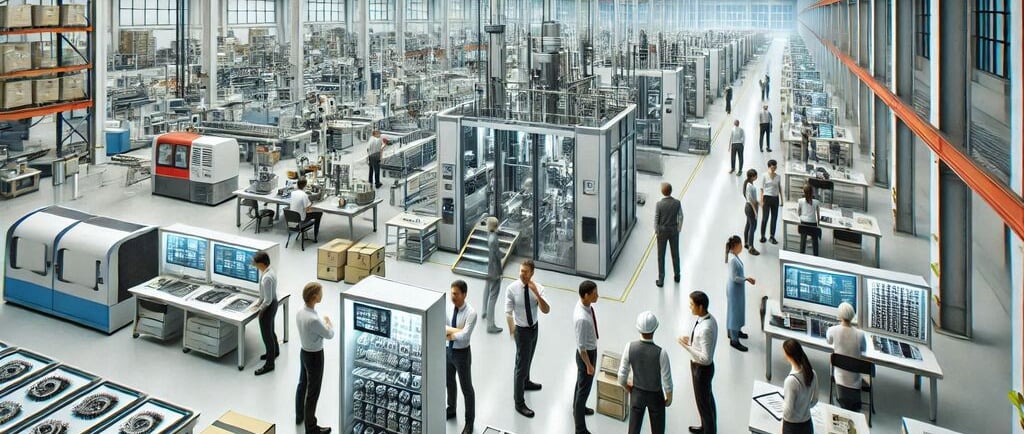Let us collaborate to foster global growth and development together.
Manufacturing Excellence
Discover the secrets to achieving manufacturing excellence through innovation, quality control, and lean strategies. Unlock industry-leading practices today.
2/26/20073 min read


[Manufacturing Excellence: Driving Innovation and Quality in Industry]
Meta Description: Discover the secrets to achieving manufacturing excellence through innovation, quality control, and lean strategies. Unlock industry-leading practices today.
What is Manufacturing Excellence?
Manufacturing excellence is more than just a buzzword—it’s the cornerstone of a thriving production business. At its core, it refers to the continuous pursuit of efficiency, quality, and innovation in manufacturing processes. Achieving this not only boosts productivity but also ensures customer satisfaction and market competitiveness.
In today’s dynamic industrial landscape, businesses that prioritize manufacturing excellence set themselves apart from the competition. Let’s dive deeper into how this strategy transforms operations and sustains long-term success.
Key Pillars of Manufacturing Excellence
1. Lean Manufacturing
Definition: Lean manufacturing focuses on minimizing waste while maximizing value for customers.
Benefits: By streamlining operations, companies can reduce costs, improve efficiency, and accelerate production timelines.
A great example of lean manufacturing is Toyota’s production system, which revolutionized the automotive industry through practices like Just-In-Time (JIT) production and Kaizen (continuous improvement).
2. Quality Management
Delivering high-quality products isn’t optional; it’s essential. Manufacturing excellence depends on implementing stringent quality control measures at every stage of production.
Tips for Success:
Use advanced technologies like IoT sensors to monitor production.
Regularly train employees to maintain consistency in output.
Conduct frequent audits to identify and resolve issues proactively.
3. Innovation and Technology Adoption
Incorporating cutting-edge technologies, such as automation, robotics, and artificial intelligence (AI), is a hallmark of modern manufacturing excellence. These tools:
Enhance precision and efficiency.
Reduce human error.
Enable data-driven decision-making.
For instance, companies that utilize predictive maintenance reduce downtime and save significantly on repair costs.
Steps to Achieve Manufacturing Excellence
Step 1: Conduct a Comprehensive Audit
Understanding current operations is the first step. Identify bottlenecks, inefficiencies, and areas for improvement through a detailed assessment.
Step 2: Define Clear Goals
Set measurable objectives, such as reducing defect rates by 10% or cutting production time by 20%. Ensure these goals align with broader business strategies.
Step 3: Invest in Employee Training
A skilled workforce is integral to manufacturing excellence. Offer regular training sessions on the latest tools, techniques, and safety protocols.
Step 4: Embrace Continuous Improvement
Adopt the Kaizen philosophy of continuous, incremental changes. Foster a culture where employees are encouraged to share ideas for improvement.
Step 5: Leverage Technology
Invest in technologies like:
Automation: Speeds up repetitive tasks.
AI: Optimizes production planning.
Digital Twins: Creates virtual simulations to test process improvements.
Benefits of Manufacturing Excellence
1. Enhanced Productivity
Streamlined processes ensure faster production times and lower costs, allowing businesses to deliver on customer expectations.
2. Better Resource Utilization
Efficient use of materials and energy not only saves costs but also supports sustainability goals—a key focus for modern consumers.
3. Competitive Advantage
Companies that consistently deliver top-quality products solidify their reputation in the market, attracting loyal customers and lucrative partnerships.
Examples of Manufacturing Excellence in Action
1. General Electric (GE)
GE achieved significant cost savings and productivity improvements by adopting lean principles and focusing on digital transformation in manufacturing.
2. Tesla
Tesla’s Gigafactories exemplify manufacturing excellence by leveraging automation and vertical integration to produce electric vehicles efficiently.
Overcoming Challenges in Manufacturing Excellence
1. Resistance to Change
Solution: Clearly communicate the benefits of new processes and involve employees in decision-making.
2. High Initial Costs
Solution: Start small by automating critical areas first, then scale gradually as savings accumulate.
3. Data Integration Issues
Solution: Use cloud-based platforms to centralize data and improve accessibility for all stakeholders.
Conclusion: Your Path to Manufacturing Excellence
Manufacturing excellence isn’t a destination—it’s a journey. By embracing lean practices, focusing on quality management, and adopting innovative technologies, businesses can stay ahead in the competitive industrial landscape.
Ready to elevate your operations? Explore our [Comprehensive Guide to Lean Strategies] or contact us for personalized consulting services. Don’t forget to share your insights and questions in the comments below!
Innovation
Cutting-edge solutions for industrial efficiency and productivity.
© 2024. All rights reserved.


